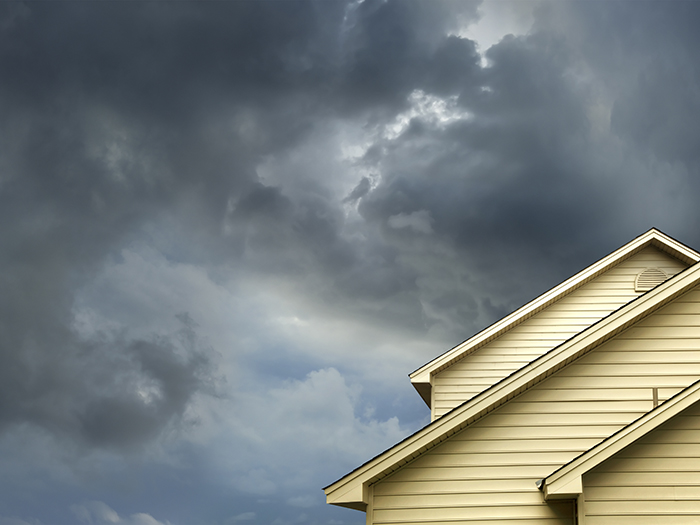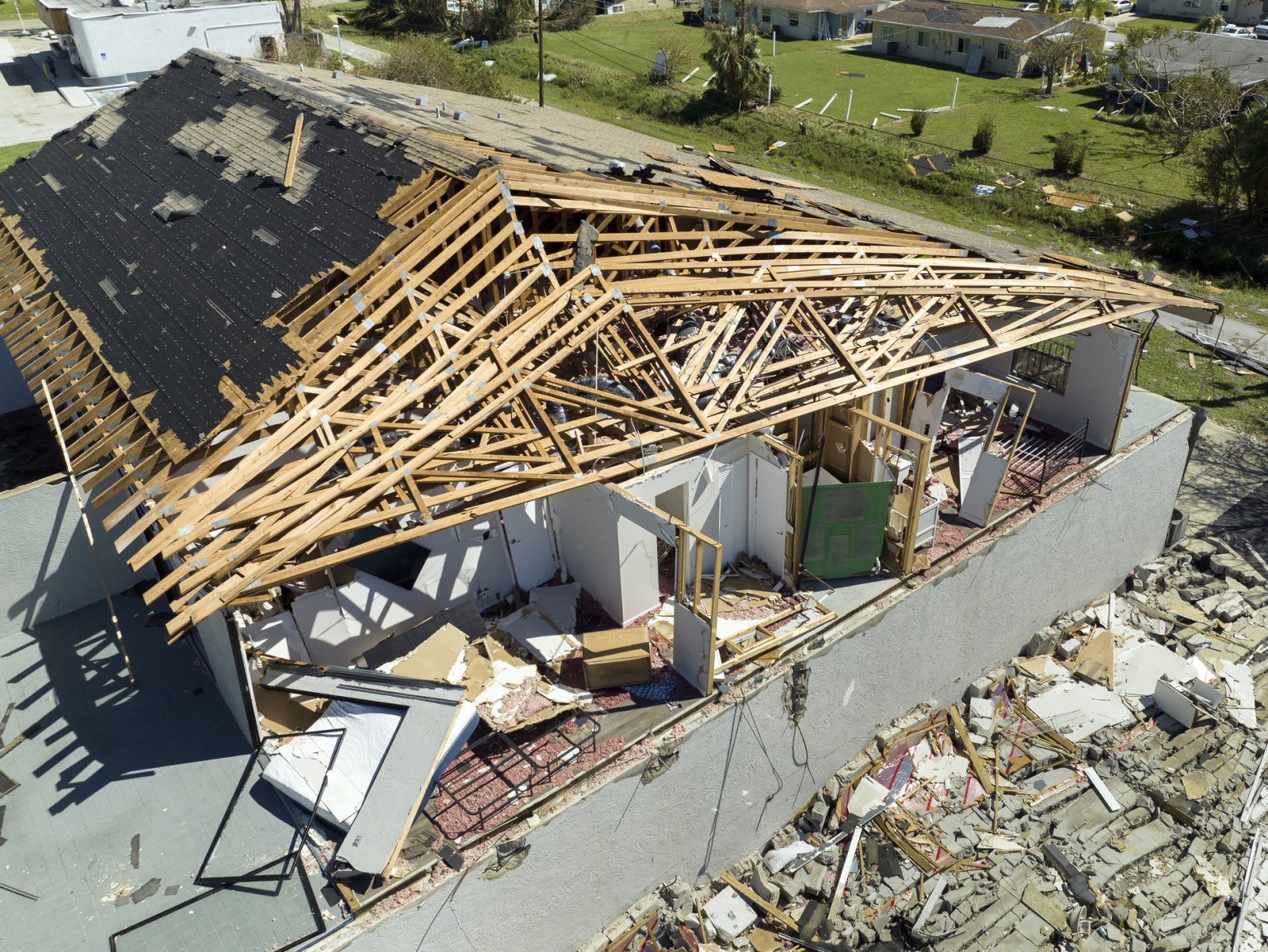Sponsored Content by The Hartford
5 Critical Actions to Take Before the Next Natural Catastrophe

The hurricane seasons of 2017 and 2018 — the costliest back-to-back hurricane seasons on record — represent a turning point in how both insurers and their insureds prepare for catastrophes.
A severe storm season is bound to strike every few years, but awareness is rising that the frequency of such devastating catastrophes is not likely to diminish, and the economic impact will continue to grow due to parallel trends in population growth and commercial development.
“More people are choosing to live and work in catastrophe-exposed areas like coastal regions and dry, heavily forested areas where wildfires can occur,” said Patrick Daley, head of Large Property insurance at The Hartford. That means more homes and more businesses — and an increase in property loss when a disaster does happen.
The catastrophes themselves are also evolving. Storms become more powerful more quickly and are taking unusual trajectories, making them less predictable.
Hurricanes Harvey and Michael are examples. Rather than moving through a steady inward path, Harvey hovered, dumping unprecedented amounts of precipitation in one place. And Michael took everyone by surprise with its rapid development into a CAT 5 storm.
To make matters worse, hurricanes, floods, earthquakes and wildfires increasingly happen in clusters. “The CAT events don’t happen in isolation anymore. It’s not just a couple. They happen one right after another, so the magnitude of the impact increases dramatically,” Daley said. According to Aon’s annual Weather, Climate & Catastrophe Insight report, insured losses from 2018 catastrophes totaled $90 billion, with an overall economic impact of $225 billion.
The growing difference between those numbers, known as the protection gap, is also an issue. While a portion of the gap can be attributed to low rates of insurance penetration in less-developed areas of the world, a major driver of its expansion is the fact that businesses simply aren’t fully prepared to deal with catastrophe and may be under-insuring their assets.
Companies who want to strengthen their resiliency against catastrophes should consider these five actions:
1. Create and test a business continuity plan.

Patrick Daley, Head of Large Property Insurance at The Hartford
After a catastrophe, there could be lasting interruptions to critical infrastructure like water and power supply, telecommunications and roads. How will your business respond? Establishing backup plans for your backup plans is a best practice — and a cornerstone of any risk management program.
Furthermore, it’s important to conduct a “what-if analysis” to see if that plan will be effective in a variety of different scenarios. This is especially true for supply chain management.
“Knowing your key suppliers’ locations and operations can help to ensure continuity. You may not be in a CAT zone, but where are your suppliers? A disaster that affects them will affect you too,” Daley said.
Natural catastrophes are impacting broader geographic areas than they have in the past. Hail storms, tornadoes and wildfires all appear to be expanding beyond historical boundaries. For this reason, even companies who have never experienced disruptions in the past due to severe weather should re-evaluate their exposure and consider diversifying their backup suppliers.
2. Ensure your policy limits match your risk exposure.
Closing the protection gap means ensuring your policy limits match your risk.
Accurate building valuations are necessary to set those limits, sub-limits and deductibles. If the numbers are off, it will ultimately impact the coverage you’re afforded.
Correct calculation of potential business interruption losses is also essential, and today there are more advanced tools available to help companies better project this impact.
“The industry has evolved in this area, and there are resources that carriers can bring to bear to help ensure an accurate determination,” Daley said. Risk managers should ask their insurers what tools can help them determine the scope of their business interruption exposure.
In addition to checking the amount of coverage afforded by a property policy, reviewing the policy language with a broker will also help risk managers understand where they might be left exposed. Is storm surge covered in your flood policy or not? What about contingent business interruption in your property policy? Is there a time element, and is that threshold appropriate? Do you have coverage for debris removal?
These questions must be answered to understand how your coverage will respond in the aftermath of catastrophe, and if it’s enough to ensure your recovery.
3. Use technology to better understand your exposure.
 Advanced tools can help companies get a clearer picture of their property risks with greater efficiency and safety. Instead of getting up on the roof to inspect its quality, for example, satellites and drones can take detailed aerial pictures.
Advanced tools can help companies get a clearer picture of their property risks with greater efficiency and safety. Instead of getting up on the roof to inspect its quality, for example, satellites and drones can take detailed aerial pictures.
“We’ve come a long way from looking up your property on Google Earth and trying to make sense of what you’re seeing. The images captured by new technology are much more granular and will provide the information needed to make better risk decisions,” Daley said.
This data can highlight, for example, if the roof is deteriorating and in need of repair, or if pooling of water suggests a drainage issue. While highlighting needs for preventive maintenance, it also serves as basis for making more accurate valuations.
Companies can also pull in third party data to build a clearer picture of their exposure. Trends mapped by the National Weather Service, for example may reveal that a specific location is likely to experience more heavy rain and wind, so that facility should be prioritized for capex investments above another building that sees fewer storms.
Here is another opportunity for risk managers to leverage the rich stores of data collected by their insurers.
“We have a lot of data from which to draw to bring distinctive risk insights to our customers,” Daley said.
4. Storm-proof your property.
Buildings don’t need to be razed and rebuilt to take advantage of certain upgrades that greatly improve their resiliency. Many fixes are relatively inexpensive and easy to implement. Anchors that keep roof-mounted equipment firmly in place amid high winds are one example. Hail guards are another. Moving critical equipment out of a flood-exposed basement up to a higher level a third.
“A properly-engineered building performs much better,” Daley said. “A few changes can go a long way in engineering out some of the CAT exposure.”
Unfortunately, building codes in many regions haven’t kept pace with climate-related property risks, so even newer structures that are compliant with local regulations really aren’t strong enough to withstand some of Mother Nature’s most dangerous temper tantrums.
The Insurance Institute for Business & Home Safety (IBHS) rates each state on the strength of their building codes. States with poor ratings consistently see more severe property damage compared to states with more robust standards from events of similar strength. Risk managers should check their state’s ranking to see if their building codes provide a good guideline for resilient construction, or if they need to go a step above.
Companies should again take advantage of their insurer’s property expertise for guidance on evaluating vulnerabilities and prioritizing capital improvements
5. Know what to do immediately post-event.
What happens in the hours right after an event can be the difference between surviving and shuttering. Different from a business continuity plan, which lays out long-term strategies, an emergency response plan details the immediate actions that should be taken to kick start the recovery process.
This includes having established relationships and contracts in place with local, reputable contractors who can prioritize your repair needs and access materials quickly. After a catastrophe, every local business and homeowner will be looking for contractors and material to begin rebuilding; having an existing relationship with a contractor moves you to the front of the line.
The same goes for providers of critical supplies like backup generators or, in the event of flooding, industrial fans which can help to mitigate mold growth.
The communication plan is also a key component of emergency response. How will facility managers check in on their employees and keep them updated on the status of their building? Who will be in charge of spearheading the recovery efforts at a specific location and delegating tasks?
Finally, knowing your claims person by name is an important and often overlooked piece of the post-event plan.
“Alerting your carrier of a loss as quickly as possible helps to get your claim rolling and may open up access to additional resources,” Daley said.
Specialized Expertise Makes a Difference
Claims professionals at The Hartford understand the importance of speed.
“We understand that our customers want to be back up and running as quickly as possible, and we want to help them do that. The speed with which we get to the impacted area and begin to assess the claim is critical,” Daley said. “We also have the ability to utilize partners to make local resources available, to help resolve claims quickly.”
Perhaps a more important differentiator, however, is The Hartford’s ability to help clients build resiliency to minimize damage in the first place. The insurer’s team of risk engineering consultants, many of whom carry a technical property specialist certification, are able to give guidance on where dollars should be spent on capital improvements.
Those recommendations are also backed by data-driven insight.
“What have we seen in over 200 years of industry experience that we can bring to bear for our customers? If we see a certain roof system that has performed better, we’ll share that. You will get that information and know all of your options when you’re working with your risk engineering consultant at The Hartford,” Daley said.
In addition to technical certifications, The Hartford’s entire property community — including risk consultants, claims professionals and underwriters — participates in an immersive training program to ensure they are up to date on the latest resilient materials, building techniques, code changes, loss trends and any other factors that affect a client’s risk.
“We have some of the best property talent in the country. Our ability to attract and retain that talent is what separates us,” Daley said.
To learn more, visit thehartford.com/specialization.
The Hartford© is The Hartford Financial Services Group, Inc. and its subsidiaries.
![]()
This article was produced by the R&I Brand Studio, a unit of the advertising department of Risk & Insurance, in collaboration with The Hartford. The editorial staff of Risk & Insurance had no role in its preparation.










